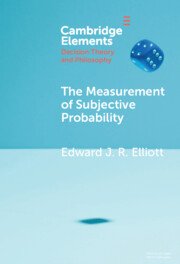Element contents
The Measurement of Subjective Probability
Published online by Cambridge University Press: 13 April 2024
Summary
- Type
- Element
- Information
- Online ISBN: 9781009401319Publisher: Cambridge University PressPrint publication: 02 May 2024



